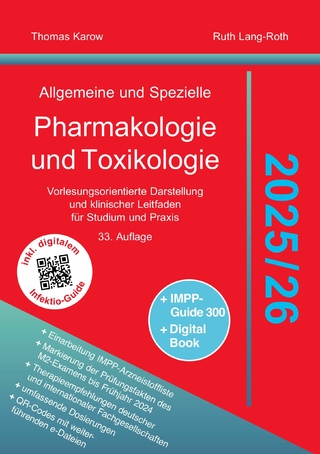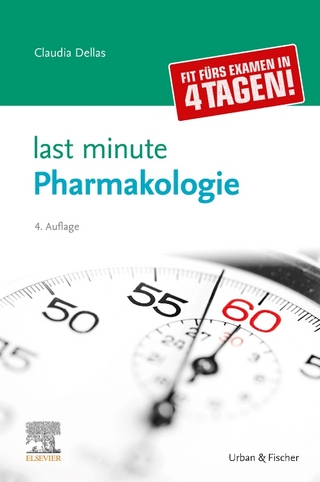
Venom Genomics and Proteomics
Springer (Verlag)
978-94-007-6415-6 (ISBN)
This volume
provides the reader with recent advances in the fields of molecular toxinology,
the biotechnological applications of venom toxins, and antivenom production.
The content of the twenty chapters of Venom Genomics and Proteomics
illustrates not only the enormous progress made since the implementation of
omics technologies in the field of toxinology, but one also realizes the road
still ahead to reach a holistic view of venomous systems. Advancement in
high-throughput technologies in the field of venomics has resulted in the
ability to generate comprehensive venom profiles for many species. However,
research on snake genomes is still in its infancy, although such studies are
eagerly awaited to gain insights into the evolutionary history of snake venom
proteins, including the mechanisms that originated venom and the regulation of
toxin expression. Fortunately, this objective is also at the reach of current
omic technologies. Therefore it would not be unrealistic to predict a bright
near future to the field of molecular toxinology.
Venom
Genomics and Proteomics covers research into the venom of scaled reptiles (lizards and
snakes), scorpions, spiders, ants and platypuses. Special consideration is
given to a number of observations made in the area of snake venom and in the
application of advanced genomics and proteomics techniques on a variety of
venom samples. The final chapters give some insight into the potential clinical
uses of venom derivatives and into the importance and challenges faced in the
production and quality control of antivenoms.
Prof P. Gopalakrishnakone, M.B.B.S., Ph.D., F.A.M.S., D.Sc., is presently professor of anatomy and chairman of the Venom and Toxin Research Programme at Yong Loo Lin School of Medicine, National University of Singapore. He is also a consultant to the Defence Science Organization in Singapore and adjunct senior research scientist at the Defence Medical Research Institute. Prof. Gopalakrishnakone is an honorary principal fellow at the Australian Venom Research Unit, University of Melbourne, Australia. His research studies include structure function studies, toxin detection, biosensors, antitoxins and neutralization factors, toxinogenomics and expression studies, antimicrobial peptides from venoms and toxins, and PLA2 inhibitors as potential drug candidates for inflammatory diseases. The techniques he employs include quantum dots to toxinology, computational biology, microarrays, and protein chips. Prof. Gopalakrishnakone has more than 160 international publications, four books, about 350 conference presentations, and 10 patent applications. He has been an active member of the International Society on Toxinology (IST) for 30 years and was president from 2008 to 2012. He is also the founder president of its Asia Pacific Section, a council member, as well as an editorial board member of Toxicon, the society’s official journal. His research awards include the Outstanding University Researcher Award from the National University of Singapore (1998); Ministerial Citation, NSTB Year 2000 Award in Singapore; and the Research Excellence Award from the Faculty of Medicine at NUS (2003). His awards in teaching include Faculty Teaching Excellence Award 2003/4 and NUS Teaching Excellence Award 2003/4. Prof. Gopalakrishnakone also received the Annual Teaching Excellence Award in 2010 at both university and faculty levels. Dr. Juan J. Calvete (Valencia, Spain, 1957) is research professor of the Spanish Research Council (CSIC) and head of the Structural and Functional Venomics Laboratory at the Instituto de Biomedicina de Valencia. He studied biology at the University of Valencia, and earned his Ph.D. degree in biochemistry from Complutense University (Madrid, 1985). Dr. Calvete completed post-doctoral training in protein chemistry and structural biology at the Banting Institute (Toronto, Canada, 1987), the Max-Planck-Institute für Biochemie (Martinsried, Germany, 1988–92), and the Institut für Reproductionsmedizin (Hannover, Germany, 1993–98) prior to assuming his current position in the Instituto de Biomedicina de Valencia in 1998. Dr. Calvete has coauthored more than 380 scientific publications in peer-reviewed journals and monographic books, which have received over 13,600 citations according to the Google Scholar database. His current research focuses on structural and functional proteomics of snake venoms, having developed proteomics-based tool (“venomics” and “antivenomics”) for exploring the evolution, composition, interactions with antivenoms, and biotechnological applications of venoms and toxins. Since 2011, Dr. Calvete serves as president of the European Section of the International Society on Toxinology. Dr. Calvete has served as first president of the Spanish Proteomics Society (SEProt). Currently, he is an editorial board member of Toxicon, Journal of Venom Research, Toxins, and editor-in-chief of the Journal of Proteomics.
Deadly Innovations: Unraveling the Molecular Evolution of Animal
Venoms.- Squamate Reptile Genomics and Evolution.- Venoms of Colubrids.- Phylogenetics
of Scorpions of Medical Importance.- Scorpion Venom Gland Transcriptomics and
Proteomics: An Overview.- Brown Spider Venom: The Identification and
Biotechnological Potential of Venom Toxins.- Venom Toxins of Fire Ants.- The
Platypus: A Venomous Mammal.- Structure-Function Relationship of Modular
Domains of P-III Class.- Snake Venom Metalloproteinases.- Biological
Activities and Assays of the Snake Venom Metalloproteinases (SVMPs).- Three-Dimensional
Structures and Mechanisms of Snake Venom Serine Proteinases,
Metalloproteinases, and Phospholipase A2s.- Structure-Function Relationship in
Heterodimeric Neurotoxin PLA2s from Viperidae Snakes Inhabiting Europe, South
America, and Asia.- Snake Venom Phospholipase A2: Evolution and Diversity. - Automated
Mass Fingerprinting of Venoms in Nanogram Range: Review of Technology.- Snake
Venom Peptidomics.- Snake Venom Proteopeptidomics: What Lies Behind the
Curtain.- Shotgun Approaches for Venom Analysis.- Purinergic Mechanisms of
Prey Acquisition by Venomous Organisms.- Applications of Snake Toxins in
Biomedicine.- Industrial Production and Quality Control of Snake Antivenoms.
| Reihe/Serie | Toxinology | Venom Genomics and Proteomics | 1.10 |
|---|---|
| Zusatzinfo | 65 Illustrations, color; 16 Illustrations, black and white; XXI, 454 p. 81 illus., 65 illus. in color. |
| Verlagsort | Dordrecht |
| Sprache | englisch |
| Maße | 155 x 235 mm |
| Themenwelt | Medizin / Pharmazie ► Medizinische Fachgebiete ► Pharmakologie / Pharmakotherapie |
| Medizin / Pharmazie ► Pharmazie | |
| Studium ► 2. Studienabschnitt (Klinik) ► Pharmakologie / Toxikologie | |
| Naturwissenschaften ► Biologie ► Biochemie | |
| Naturwissenschaften ► Biologie ► Zoologie | |
| Naturwissenschaften ► Chemie ► Technische Chemie | |
| Technik | |
| Schlagworte | drug development • drug discovery • Toxin • Toxinology • Venom |
| ISBN-10 | 94-007-6415-4 / 9400764154 |
| ISBN-13 | 978-94-007-6415-6 / 9789400764156 |
| Zustand | Neuware |
| Haben Sie eine Frage zum Produkt? |
aus dem Bereich


